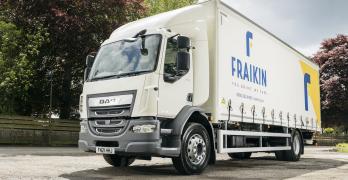Cold chain compliance: down to the last mile
- 08/06/23
- 4 min
To guarantee the safety of cold products, the last mile is fraught with danger. This distribution phase exposes products to temperature excursions that could compromise the cold chain. Ensuring this compliance requires identifying risk factors, implementing best practices and carrying out checks.

After a final dispersal from the logistics flow, the distribution of goods sets out on its last mile. This encompasses many challenges. Among them, space and time complicate the job. In an urban environment ill-suited for the frequent stops of a delivery vehicle, carriers often have to deliver packages just in time in order to satisfy the expectations of recipients and senders. These same senders and recipients have become increasingly demanding, because the connected world we live in has created the illusion that everything can be delivered with just one click. Taking action to avoid breaking the cold chain adds an extra level of complexity and responsibility since people’s health depends on it.
Protecting against numerous and ubiquitous risks while ensuring tracking
Serving sites within a close geographic proximity means the number of times the refrigerated van is opened is multiplied. In addition to the possible variations in temperature within the vehicle, there is the risk of theft and the risk of parcels being swapped or delivered to the wrong recipients. These transport conditions have spurred the development of tracking. Tracking is indicated if one of the items is particularly sensitive and if one of the stages of transport is fulfilled using an unreliable means of maintaining temperature, such as cooler bags.
In addition to vehicle geolocation during its route, detecting when the doors of the refrigerated compartment are open contributes to verifying that it takes place at the points provided for collection or delivery. Detecting when doors are opened will also make it possible to quantify the number of times the door is opened and adjust the settings. Today, any object can be equipped to send information to the Internet. This is known as the Internet of Things or IoT. It allows you to locate a pallet, or even a smart parcel. The probe fitted to one of these containers can also record and transmit the temperature, hygrometry, pH, elapsed time or impacts suffered during transport. The option of using smart labels is growing and diversifying to adapt to different use cases. For example, Connectwave is one of the organisations that provides an overview of the solutions currently available.
Cold chain compliance: temperature monitoring during transport
To ensure the health safety of the cold chain during the last mile, compliance with the setpoint temperature of the refrigerated vehicle is monitored using sensors now integrated with telematics. In this area, there are solutions provided by the manufacturers of refrigeration units and those of independent telematics experts. As for coach builders in the sector, they will market a system supplied by a third party. For frozen food, temperature measuring instruments must comply with the EN 12830, EN 13485 and EN 13486 standards. In practice, disputes are less linked to a technical problem than to human error. This situation can be prevented by employing telematics comparing the estimated temperature for transport with that actually recorded.
A simple thermometer reading taken by the recipient can result in the rejection of the goods, and their loss will be to the detriment of the sender. There is a wide array of thermometer options, whether probes or infrared. Some models are intended for the food industry, others are designed for the pharmaceutical industry. Some even showcase their antimicrobial protection.
Often set up by the shipper, single-use recorders are designed to be inserted into goods, sometimes without the knowledge of the carrier. These recorders require planning their recovery at the destination, then their use. This requires handling since these recorders are frequently in USB key form. Even easier, the Topcryo tablet by Cryolog simply changes colour to signal a temperature excursion.
Each shipper, carrier or recipient now has control systems in place adapted to their specific activity. In addition to the calls for tracking and control for which carriers must provide a solution, there is the interest of shippers in alternative engine specifications as well as the local regulations requiring their use. The last mile thus comprises multiple technological transitions, making the support lent by professionals particularly critical.
Also worth reading

The domino effect of geopolitics on automotive supply chains

Transport: The promise of hydrogen

